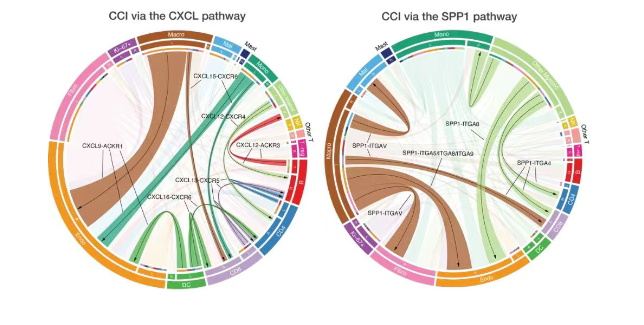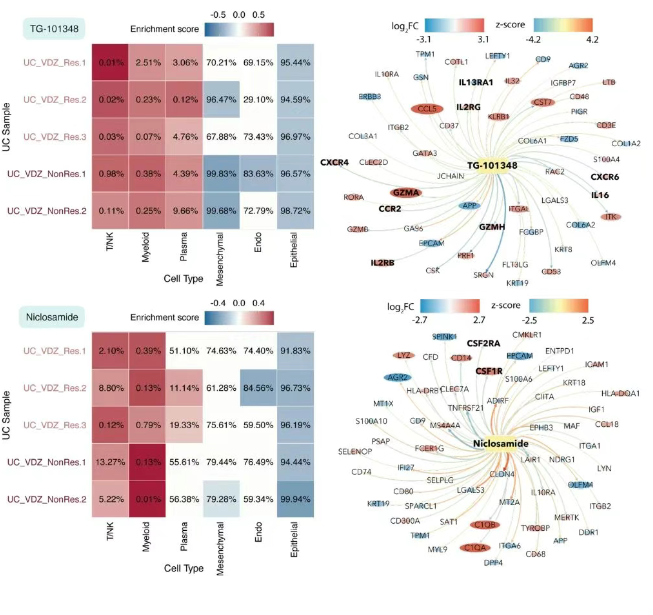07
2025
-
06
Luo Yuan/Zeng Zexian's team developed a spatial omics data analysis platform to empower disease mechanism research and drug development
Author:
SOAR is one of the most comprehensive spatial omics databases and analytical platforms known to date, integrating 3461 high-quality samples from 13 species, 42 tissue types, and 19 spatial transcriptomics technologies, and standardized processing through a unified workflow. SOAR not only focuses on data aggregation, but is also an open analytical platform, building standardized data processing workflows and rich data visualization and analysis tools.
In this study, the research team used the SOAR platform to focus on the analysis of cancer spatial omics data, and found that the polarization state of CXCL16⁺/SPP1⁺ macrophages reflects a key feature of the coordination of immune cell polarization in the tumor microenvironment. This finding not only enriches our understanding of tumor immune heterogeneity, but also provides a new perspective for future tumor immunotherapy target screening.

It is worth mentioning that SOAR has successfully integrated spatial omics data with drug target databases to provide users with target discovery and drug screening functions, thereby promoting future precision medicine research and drug development. In the study of ulcerative colitis, SOAR demonstrated its powerful ability in immune-related drug repositioning. Using the SOAR platform, the research team analyzed spatial omics data from healthy controls and ulcerative colitis patients treated with vedolizumab, and revealed the abnormal activation of the JAK-STAT pathway in T cells and myeloid cells (including macrophages and monocytes) in the lesion area. SOAR accurately identified the significant inhibitory effects of JAK inhibitors such as tofacitinib, TG-101348, and niclosamide in immune cells, which is particularly evident in vedolizumab-non-responders where traditional treatment is ineffective. SOAR's drug interference analysis showed that these small molecules can effectively inhibit the expression of various pro-inflammatory cytokines and their receptors (such as IL-2R, CSF1R, TNF, and IL23A), thereby downregulating inflammatory signaling pathways, reducing mucosal immune cell infiltration and epithelial damage. This result not only provides a treatment option with broad-spectrum immunomodulatory capabilities for patients with inflammatory bowel disease, but also provides data support for the design of future combination therapy clinical trials, highlighting the potential of SOAR in analyzing inflammatory mechanisms and promoting the development of immune-related drugs. In addition, by analyzing cancer spatial omics data, SOAR successfully predicted and verified sirolimus and trichostatin A as anti-cancer drug candidates that can target the PI3K/Akt/mTOR pathway to inhibit cancer cell growth and proliferation.

Yiming Li, Yanyi Ding, Saya Dennis, Meghan Hutch, and Jiaqi Zhou are the co-first authors of this paper. Yuan Luo and Ze Xian Zeng are the co-corresponding authors. The release of SOAR provides a solid foundation for future algorithm benchmarking, disease mechanism exploration, target discovery, and drug screening. With further technological advancements, SOAR is expected to become a daily tool for researchers and pharmaceutical developers, promoting the analysis of disease molecular mechanisms and the development of precision treatment strategies.
LATEST NEWS
2025-07-12
Hyperspectral channel density on-chip diffractive speckle spectrometer
Driven by the demand for high-performance miniature spectrometers, research on chip-scale spectrometers is continuously breaking through towards high integration, high resolution, and large bandwidth. This work proposes a silicon-based on-chip spectrometer based on cascaded disordered metasurfaces. Through various on-chip wavefront modulation mechanisms, high-spectral speckle is generated, which expands the number of spectral channels with a compact chip size, thus achieving extremely high on-chip spectral channel density and providing an effective means for achieving high-resolution, large-bandwidth spectral detection.
2025-07-14
Ultrasensitive room-temperature extreme photoelectric response achieved
This study, for the first time, achieved the control of ultra-sensitive photoelectric response optimized for room temperature conditions through electromagnetically induced potential well effects and exciton insulator phase transition characteristics.
2025-07-15
Preparation and research progress of glass scintillators for X-ray imaging
Developing suitable host materials with strong X-ray absorption coefficient, good exciton transport efficiency, low phonon energy, and high lanthanide ion solubility remains a cutting-edge research direction in the field of X-ray detection.
2025-07-16
Quantum logic gates based on single-piece gradient metasurface
In today's rapidly developing quantum information technology, realizing efficient and highly integrated quantum logic gates is one of the key challenges in the field of integrated quantum optics.
2025-07-17
Preparation and performance study of epoxy-thiol high-contrast color polymer dispersed liquid crystals
Polymer Dispersed Liquid Crystal (PDLC) is a smart material consisting of micron-sized liquid crystal droplets dispersed in a polymer matrix.

